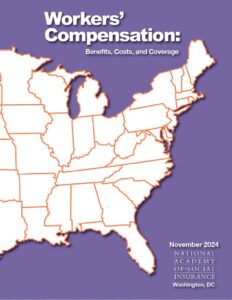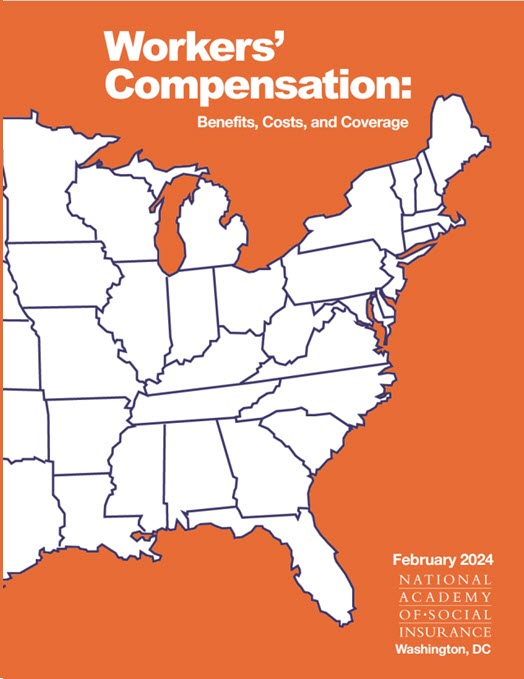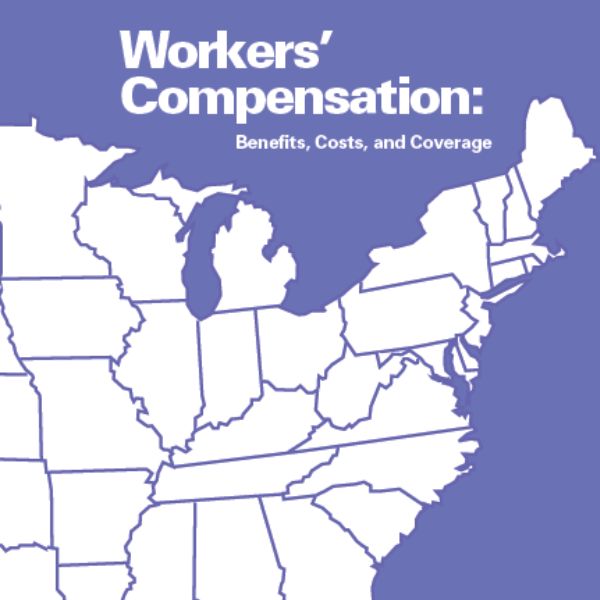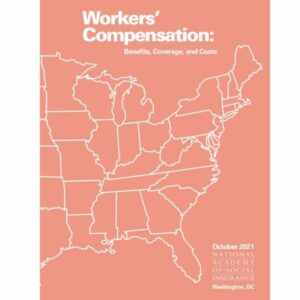By:
Published: November, 2022
Workers’ Compensation
Workers’ compensation is a no-fault insurance program which provides employees who become injured or ill at the workplace coverage of medical costs and partial wage replacement. It consists of a unique program in each state and a series of programs for federal employees.
Benefits, Costs, and Coverage – 2022 Data
This is the Academy’s 27th annual report on workers’ compensation benefits, costs, and coverage. This report presents new data on state and federal workers’ compensation programs for 2022 and updated estimates for 2018-2021. The updated estimates replace estimates in the Academy’s prior reports. This report shows five-year trends in benefits, costs, and coverage, as have been reported in prior years.
Benefits, Costs, and Coverage
February 2024
The 26th annual workers’ compensation report produced by the Academy provides the only comprehensive data on workers’ compensation benefits, coverage, and employer costs for the nation, the states, the District of Columbia, and federal programs. With a five-year study period spanning 2017-2021, this is the second annual report to cover the COVID-19 pandemic period, which permits an early understanding of the adaptation of workers’ compensation to the pandemic and general reversions to pre-pandemic trends. The report includes 19 tables, 7 figures, and 5 appendices detailing outcomes related to workers’ compensation benefits, costs, and coverage.
November 2022
The 25th annual workers’ compensation report produced by the Academy provides the only comprehensive data on workers’ compensation benefits, coverage, and employer costs for the nation, the states, the District of Columbia, and federal programs. This is the first annual report to include data reflecting the impacts of the COVID-19 pandemic, with a five-year study period from 2016 to 2020. The report includes 19 tables, 7 figures, and 5 appendices detailing outcomes related to workers’ compensation benefits, costs, and coverage.
October 2021
The 24th annual report provides the only comprehensive data on workers’ compensation benefits, coverage, and employer costs for the nation, the states, the District of Columbia, and federal programs over a five-year study period of 2015 – 2019.
dddddddddddddddddd




